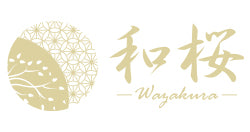Vol#1 Bonsai for New Year: Decoration and Meaning
Vol #1 Written by Yusuke Ogawa
Bonsai for New Year
Happy new year! What are the traditions for the New Year in the area where you live? Japanese people have traditions such as to decorate with kadomatsu (門松), shimekazari (しめ飾り), and kagami mochi (鏡餅). And when it comes to bonsai, for New Year's decorations, there is the special seasonal arrangement called Shochikubai (松竹梅) that it is very popular still up to this day.

Decoration
Literally, the original Japanese word means pine tree (松 matsu/sho), bamboo (竹 take/chiku) and plum (梅 ume/bai).
It is an arrangement consisting of bonsai trees of those three types all planted in one pot, adding as well as some secondary plants such as nandina, marlberry, or butterbur sprout to fill the gaps and make it more cohesive and beautiful.
Back in the day when I was a bonsai artist apprentice, it was an annual event and great honor to work on making seasonal bonsai arrangements for the end of the year. From these days I remember that the balance was very important, and I had to look for it and remember to keep it in the composition because it was a big part of the process.
Meaning of Shochikubai (松竹梅)
Shochikubai is based on the Three Friends of Winter art motif, which originated in China and has a very special meaning associated with each tree.
- Pine trees (松) retain green leaves even in winter, so they have been used in Shinto rituals since ancient times and have been regarded as a symbol of immortality and longevity.
- Bamboo (竹) is a symbol of vitality and prosperity of descendants because of its vigorous growth and toughness.
- Plum trees (梅) have been regarded as a symbol of nobility and prosperity because they bloom in the harsh cold.
The plants used for secondary decoration also have a lot of symbolism. It is said that the nandica escapes difficulties, the marlberry calls for money and good luck, and the butterbur sprout improves your luck.
Try to think about these meanings (or of the meaning of any other plant or bonsai tree you may use) when you create your own arrangement. Not only for New Years but for any other occasion. And do not forget to enjoy the process.
Mr. Ogawa (owner of reBonsai, collaborator of Wazakura Japan)

I like the seasonal Japanese decorations very much